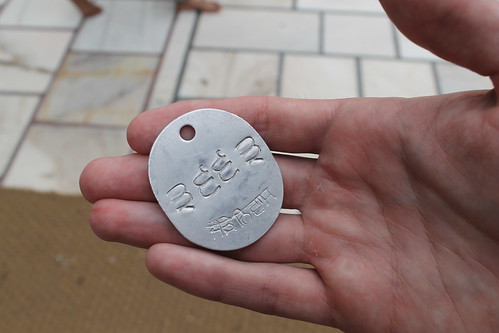One of the things I was most interested in when we were planning this trip to Okinawa was its historical and current relationship with the US. I knew that the US had bases on Okinawa, and that it had been a major part of the WWII offense against the Japanese. I was curious to see what sentiment remained today around Americans, and also what remained of the history from that era.
A rich and interesting visit to the #Okinawa Prefectural #Museum. https://t.co/AoCtjnRdkN pic.twitter.com/k9YKKoAp8h
— Connie Ma (@ironypoisoning) September 11, 2016
We got to learn more about that when we visited the Okinawa Prefectural Museum and Art Museum on our second day. It was a wonderfully detailed museum with plenty of English captioning, and we spent a long time watching videos, checking out some amazing audio-visual exhibits, and being absolutely amazed by the wealth and the breadth of history covered here. There was a stunning projector display of the weather patterns around the Ryukyu Islands (of which Okinawa is the biggest), as to where typhoons typically go, and currents which have guided historical trading patterns with the Chinese and the Japanese. The more traditional exhibits didn’t disappoint either, with a lot of detail about how Chinese influence led to imperial adoption of dragons and similar architecture, and Japanese influence led to imposing a feudal samurai-and-peasant structure. Continue reading Finding America in Okinawa.


